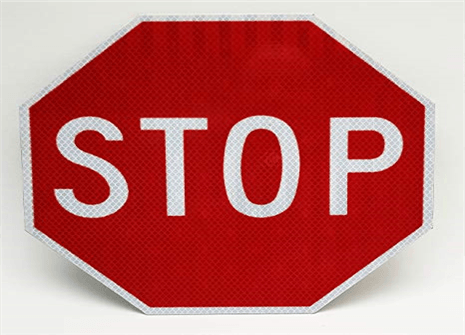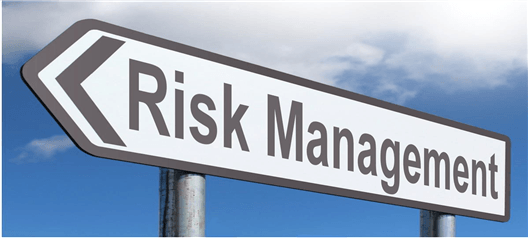
Here are just five of the many mistakes I made during my trading career and all of them, without exception, cost me money. I made many more, but I will just concentrate on the ones I think other traders will benefit from.So, I lost money but I’m glad these mistakes happened as I eventually recognized the tactical and emotional errors I was making and rectified them. I now avoid sabotaging my own trades due to these common errors. In the short-term it was a painful and costly lesson, in the long-term I retrospectively look at it as a down payment on future returns.
While no one likes to admit they are wrong, it’s human nature, it is an important part of the process to becoming a better and more profitable trader.
So herein no particular order my mea culpa – my five top day trading mistakes.

This one was a real account killer. When you enter any trade, you should know both your target price and where the trade no longer works for you. Your stop loss is there to make sure that your losses are manageable and within your trading tolerance. In short, they are there to stop you from running up excessive losses. If you keep hitting your stop losswhen you trade, you should do two things immediately – check that your original trade price is correct and not put on another trade until you are sure that you want that position at that price.
Secondly you should reduce your trade size until you return to consistently profitable trading, building both your confidence and your account. If you don’t use stop losses, one trade could potentially wipe you out or lead to severe losses from which it can take a long time to recover. And don’t use mental stop losses – a number you have in your head where you will exit a trade – they don’t work, and I know that for a fact.Stop losses helped to preserve my P&L when trades went against me and kept me in the market.

- Failing to Prepare Correctly
This starts before you open your trading account for the day. You need to be ‘in a good place’ and not tired, upset, distracted or emotional. It was easy to open my computer, sit down with a coffee and just start trading, however I felt or unprepared I was. Trading is a profession and needs to be treated as such. Before you open your account, write down in your trading journal how you feel and make and honest appraisal that you are confident and good to go before you start.
Review your trading journal on a regular basis – if you are trading when distracted for any reason it will show up on the right-hand side of your P&L. Trading financial markets is exciting and can lead people trade when they are not correctly prepared. Don’t worry about missing a trade, there are plenty more of them on the horizon.
If you want to learn howto create a daily trading plan, we have recorded an in-depth podcast to help you – How to Create a Trading Plan – Podcast

- Letting Emotions Take Control
This one can get away from you quite quickly without you even recognising that it is happening. During trading hours, I went through a range of emotions – happy, sad, frustrated – without recognising them. For example, if I was experiencing a bad run it was quite easy to start ‘forcing trades’ to try and re-coup losses when under normal circumstances I would have left the trade set-up alone.
On the other side of the coin, when I was experiencing a good run, I began to feel invincible and I started pushing as I expected the run to continue. Both are wrong.
Another well-known trading emotion is FOMO – Fear of Missing Out – when a trader sees others making money on an asset and jumps in, without preparing, to take advantage of the move. Momentum trading is fine when you have set-up correctly but jumping on a move, especially one that you cannot explain, can be fraught with danger. Don’t panic and dive in, there is always another trade around the corner. And don’t get angry when the market is not moving the way you expected it to. If you get angry you may start ‘revenge trading’ to get back at the market. All that happens then is you will lose money.
Don’t fight the market, go with the flow. Be in charge of your own destiny.
What is FOMO in Trading? Characteristics of a FOMO Trader

If you don’t manage your risk properly, however many winning trades you make, you may still end up losing part of your trading capital. When I first started trading it took me time to fully understand that it is not the number of wining trades you make, it is the quality of them and your losses. No point making £1500 in three trades if you lose £2000 on your fourth trade. You should always set a risk-reward ratio when entering a trade – one unit of risk for two units of reward should be your minimum ratio.
Leverage – putting down a certain percentage of the full value of your trade – is another area that needs to be carefully monitored. If you over-leverage your position, depending on your providers limits, then an adverse move in any trade set-up can wipe out a large portion of your trading account.
Leverage, if available, should be used very carefully. I could include stop losses in this section, but they are important enough to have warranted a section of their own.
What is Forex Risk Management? Learn the Basics

This applies to both the amount of trades you are doing and the number of markets you are trading. Trading is fun, so the more you trade the more fun you have, right? No, overtradingthe market happens when you lose patience – and therefore discipline – and constantly trade because you feel that you need to be in the market. In turn, you can’t wait for the trade you really want.
Traders who only use short-time frames charts i.e. 5 mins, will try and justify entering a trade by a very short-term move on a chart. Traders should not feel forced to trade and only trade when all their parameters are met. I recognized too late that constantly jumping between time frames on charts to try and ‘justify’ my trading decision was wrong.
Overtrading the number of markets is slightly different as a trader will spread himself/herself too thin across a wide range of asset markets. While there is value to be found for traders watching and researching a range of different asset classes, trading multiple markets is very difficult as it is easy to lose concentration when trading one or more markets, leaving your trade set-ups and risk management at risk. Tryto fully apply your focus on anything you intend to trade.
For most people – well it was for me – it is ideal to only trade 1-3 markets at any one time, so they can spendtheir free time researching other asset markets they are interested in.
If you are new to the foreign exchange market and would like to know more, we have recorded a podcast to guide you through the one of the world’s most liquid trading markets.
Why Trade Foreign Exchange? – Podcast
Top Day Trading Mistakes – Summary
There are many more mistakes that I made while trading, but the ones that I have mentioned, and corrected, are the ones that had the most negative impact on my P&L. Changing habits is difficult and the process of change can only start after you recognize what needs to be changed. Discipline is a major factor in successful and profitable trading, more so than other skills including technical analysis. Make the necessary changes.



